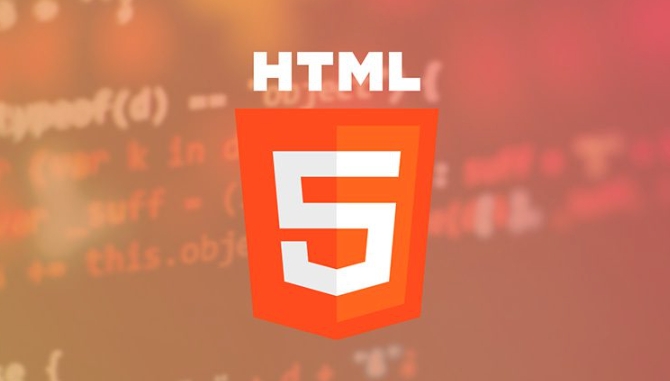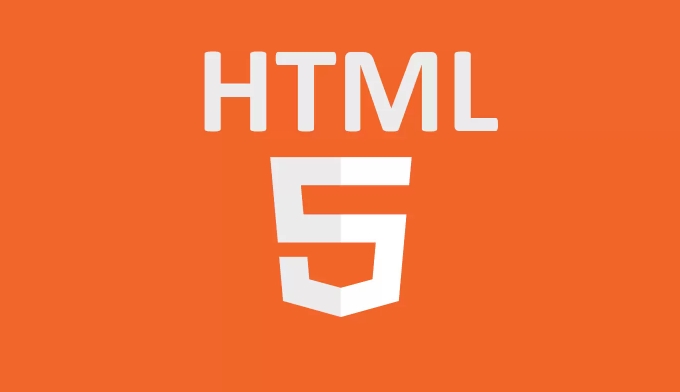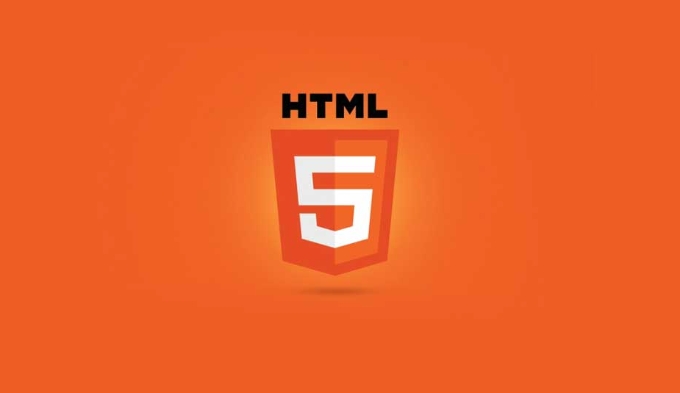 or <br> are self-closed tags; common tags include <h1> to <h6> to represent titles, <div> for grouping, <a> to define links, <ul>,
<ol>, <li> for lists. HTML attributes provide additional information and appear in the tag in the form of name-value, such as href="https://example.com" specifying the link address, src specifies the image path, alt enhances accessibility and SEO, class and id are used for CSS styles and unique identification, and data-* attributes support JavaScript interactive components; attributes must be used with corresponding tags, such as href only applies to <a>, src mainly used for
or <br> are self-closed tags; common tags include <h1> to <h6> to represent titles, <div> for grouping, <a> to define links, <ul>,
<ol>, <li> for lists. HTML attributes provide additional information and appear in the tag in the form of name-value, such as href="https://example.com" specifying the link address, src specifies the image path, alt enhances accessibility and SEO, class and id are used for CSS styles and unique identification, and data-* attributes support JavaScript interactive components; attributes must be used with corresponding tags, such as href only applies to <a>, src mainly used for  , etc., and some attributes such as required do not require assignment. Tags and attributes collaborate to build web pages with complete functions, clear structure and clear semantics. <p>
, etc., and some attributes such as required do not require assignment. Tags and attributes collaborate to build web pages with complete functions, clear structure and clear semantics. <p> </p>
<p> HTML tags and attributes are the building blocks of any webpage. Tags define the structure and meaning (semantics) of content, while attributes provide extra information about those tags. </p>
</p>
<p> HTML tags and attributes are the building blocks of any webpage. Tags define the structure and meaning (semantics) of content, while attributes provide extra information about those tags. </p>

What Are HTML Tags?
<p> HTML tags are like labels that tell the browser how to display content. They're enclosed in angle brackets and usually come in pairs: an opening tag and a closing tag. The content goes between them. </p> <p> For example:</p>
<p> For example:</p><p>This is a paragraph.</p><p> Here,
<p> is the opening tag, </p> is the closing tag, and everything in between is the content. Browsers know to display this as a paragraph. </p> <p> Some tags are self-closing, like
<p> Some tags are self-closing, like <img src="/static/imghw/default1.png" data-src="photo.jpg" class="lazy" alt="What are HTML tags and attributes explained?" > or <br> , which don't need a separate closing tag.</p><p> Common tags include:</p><ul><li> <h1> to <h6> for headings<li> <div> for grouping sections<li> <a> for links<li> <ul> , <ol> , and <li> for lists<p> Tags help structure your page so both browsers and assistive technologies (like screen readers) can understand it.</p>What Are HTML Attributes?
<p> Attributes give more details about an HTML element. They appear inside the opening tag and usually come in name-value pairs.</p><p> For example:</p><a href="https://example.com">Click here</a><p> In this case,
href is the attribute name, and "https://example.com" is its value. It tells the browser where the link should go.</p><p> Some common attributes you'll see:</p><ul><li> class – used for styling with CSS<li> id – give a unique identifier to an element<li> src – used in images to specify the file path<li> alt – provides alternative text for images<p> You can also use custom data attributes like data-role="menu" when building interactive components with JavaScript.</p>How Tags and Attributes Work Together
<p> Tags set the role of an element, and attributes fine-tune how that element behaves or looks. For instance:</p><img src="/static/imghw/default1.png" data-src="photo.jpg" class="lazy" alt="A description of the image"><p> In this example:</p><ul><li>
<img alt="What are HTML tags and attributes explained?" > is the tag — it tells the browser to show an image<li> src tells it which image to load<li> alt describes what the image shows, which helps accessibility and SEO<p> Another example:</p><input type="text" placeholder="Enter your name" required><p> Here, the
type attribute defines what kind of input it is, placeholder gives a hint to users, and required makes sure they fill it out before submitting a form.</p>
<p> You'll often see multiple attributes on one tag, especially in forms or interactive elements.</p>
When to Use Which Attribute
<p> Not every attribute works on every tag. Some are specific to certain elements. For example:</p> <ul> <li>href only works with <a> , <link> , and a few others
<li> src is used mainly with <img alt="What are HTML tags and attributes explained?" > , <script></script> , and <iframe></iframe>
<li> type appears on <input> , <button></button> , and <script></script>
<p> It's good practice to look up which attributes are valid for each tag. You can check on sites like MDN Web Docs or W3Schools.</p>
<p> Also, some attributes don't need values — like required in forms. Just having them there means "yes, turn this on."</p>
<p> That's the basic idea. You don't need to memorize all of them — just get comfortable with the most common ones. As you build more pages, it'll become second nature.</p>
The above is the detailed content of What are HTML tags and attributes explained?. For more information, please follow other related articles on the PHP Chinese website!

Hot AI Tools

Undress AI Tool
Undress images for free

Undresser.AI Undress
AI-powered app for creating realistic nude photos

AI Clothes Remover
Online AI tool for removing clothes from photos.

Clothoff.io
AI clothes remover

Video Face Swap
Swap faces in any video effortlessly with our completely free AI face swap tool!

Hot Article

Hot Tools

Notepad++7.3.1
Easy-to-use and free code editor

SublimeText3 Chinese version
Chinese version, very easy to use

Zend Studio 13.0.1
Powerful PHP integrated development environment

Dreamweaver CS6
Visual web development tools

SublimeText3 Mac version
God-level code editing software (SublimeText3)

Hot Topics
 How do I stay up-to-date with the latest HTML standards and best practices?
Jun 20, 2025 am 08:33 AM
How do I stay up-to-date with the latest HTML standards and best practices?
Jun 20, 2025 am 08:33 AM
The key to keep up with HTML standards and best practices is to do it intentionally rather than follow it blindly. First, follow the summary or update logs of official sources such as WHATWG and W3C, understand new tags (such as) and attributes, and use them as references to solve difficult problems; second, subscribe to trusted web development newsletters and blogs, spend 10-15 minutes a week to browse updates, focus on actual use cases rather than just collecting articles; second, use developer tools and linters such as HTMLHint to optimize the code structure through instant feedback; finally, interact with the developer community, share experiences and learn other people's practical skills, so as to continuously improve HTML skills.
 How do I use the element to represent the main content of a document?
Jun 19, 2025 pm 11:09 PM
How do I use the element to represent the main content of a document?
Jun 19, 2025 pm 11:09 PM
The reason for using tags is to improve the semantic structure and accessibility of web pages, make it easier for screen readers and search engines to understand page content, and allow users to quickly jump to core content. Here are the key points: 1. Each page should contain only one element; 2. It should not include content that is repeated across pages (such as sidebars or footers); 3. It can be used in conjunction with ARIA properties to enhance accessibility. Usually located after and before, it is used to wrap unique page content, such as articles, forms or product details, and should be avoided in, or in; to improve accessibility, aria-labeledby or aria-label can be used to clearly identify parts.
 How do I create a basic HTML document?
Jun 19, 2025 pm 11:01 PM
How do I create a basic HTML document?
Jun 19, 2025 pm 11:01 PM
To create a basic HTML document, you first need to understand its basic structure and write code in a standard format. 1. Use the declaration document type at the beginning; 2. Use the tag to wrap the entire content; 3. Include and two main parts in it, which are used to store metadata such as titles, style sheet links, etc., and include user-visible content such as titles, paragraphs, pictures and links; 4. Save the file in .html format and open the viewing effect in the browser; 5. Then you can gradually add more elements to enrich the page content. Follow these steps to quickly build a basic web page.
 How do I create checkboxes in HTML using the element?
Jun 19, 2025 pm 11:41 PM
How do I create checkboxes in HTML using the element?
Jun 19, 2025 pm 11:41 PM
To create an HTML checkbox, use the type attribute to set the element of the checkbox. 1. The basic structure includes id, name and label tags to ensure that clicking text can switch options; 2. Multiple related check boxes should use the same name but different values, and wrap them with fieldset to improve accessibility; 3. Hide native controls when customizing styles and use CSS to design alternative elements while maintaining the complete functions; 4. Ensure availability, pair labels, support keyboard navigation, and avoid relying on only visual prompts. The above steps can help developers correctly implement checkbox components that have both functional and aesthetics.
 How do I minimize the size of HTML files?
Jun 24, 2025 am 12:53 AM
How do I minimize the size of HTML files?
Jun 24, 2025 am 12:53 AM
To reduce the size of HTML files, you need to clean up redundant code, compress content, and optimize structure. 1. Delete unused tags, comments and extra blanks to reduce volume; 2. Move inline CSS and JavaScript to external files and merge multiple scripts or style blocks; 3. Simplify label syntax without affecting parsing, such as omitting optional closed tags or using short attributes; 4. After cleaning, enable server-side compression technologies such as Gzip or Brotli to further reduce the transmission volume. These steps can significantly improve page loading performance without sacrificing functionality.
 How has HTML evolved over time, and what are the key milestones in its history?
Jun 24, 2025 am 12:54 AM
How has HTML evolved over time, and what are the key milestones in its history?
Jun 24, 2025 am 12:54 AM
HTMLhasevolvedsignificantlysinceitscreationtomeetthegrowingdemandsofwebdevelopersandusers.Initiallyasimplemarkuplanguageforsharingdocuments,ithasundergonemajorupdates,includingHTML2.0,whichintroducedforms;HTML3.x,whichaddedvisualenhancementsandlayout
 How do I use the element to represent the footer of a document or section?
Jun 25, 2025 am 12:57 AM
How do I use the element to represent the footer of a document or section?
Jun 25, 2025 am 12:57 AM
It is a semantic tag used in HTML5 to define the bottom of the page or content block, usually including copyright information, contact information or navigation links; it can be placed at the bottom of the page or nested in, etc. tags as the end of the block; when using it, you should pay attention to avoid repeated abuse and irrelevant content.
 How do I embed video in HTML using the element?
Jun 20, 2025 am 10:09 AM
How do I embed video in HTML using the element?
Jun 20, 2025 am 10:09 AM
To embed videos in HTML, use tags and specify the video source and attributes. 1. Use src attributes or elements to define the video path and format; 2. Add basic attributes such as controls, width, height; 3. To be compatible with different browsers, you can list MP4, WebM, Ogg and other formats; 4. Use controls, autoplay, muted, loop, preload and other attributes to control the playback behavior; 5. Use CSS to realize responsive layout to ensure that it is adapted to different screens. Correct combination of structure and attributes can ensure good display and functional support of the video.






